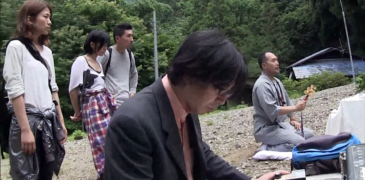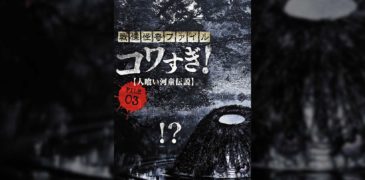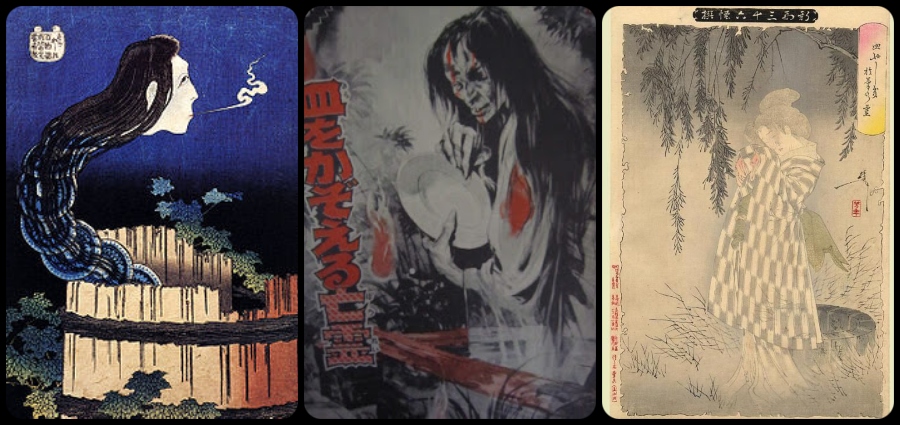
Banchō Sarayashiki, translated to ‘The Dish Mansion at Banchō’, has a strong legacy in Japan as a kaidan (Japanese ghost story) since 1741, it has been adapted in various ways (e.g. manga, novella, television series) and depicted in the ever-enduring ukiyo-e. A bunraku play titled ‘Banchō Sarayashiki’ was performed at the Toyotakeza theatre in the 17th century, with kabuki versions following the success at likes of the Naka no Shibai theatre in Osaka, and these traditional practices solder the tale into national heritage. The tale features ‘Okiku’, who has become a folkloric icon as an onryō, associated to haunted wells where her body was dumped as a victim of an unfair and manipulated accusation – the well a clear connection to the disposal in Ringu as a trope.
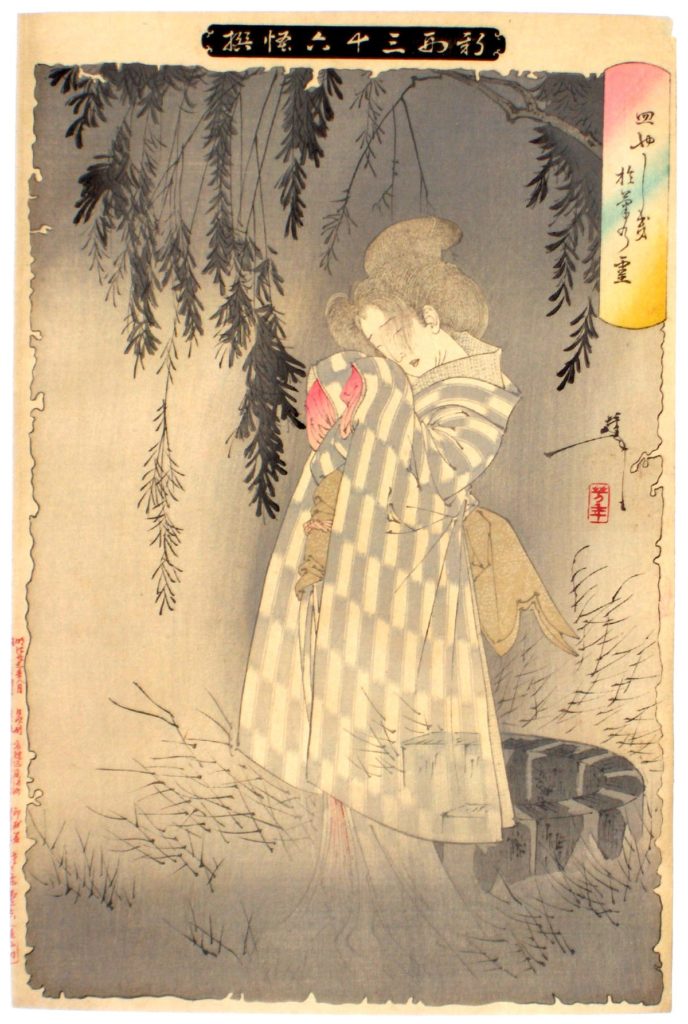
The original tale recounts a beautiful maid, Okiku, serving as the maid to the samurai Aoyama Tessan whose interest in her is relentless – he’s enamoured with her stunning looks and takes every chance to court her. As she rejects him politely to conserve her modesty, Aoyama is frustrated at being spurned and hatches a devious scheme – he will hide one of the ten Delft plates she’s responsible for overseeing as immensely valuable heirlooms – a serious oversight of her duty deserving even her execution. Okiku notices there are only nine plates and counts for ten obsessively, guilty, and shocked at her error to lose the tenth – there are only 9.
Her master, Aoyama, discovers the scene and offers her clemency in exchange for her submitting as her lover- a proposal completely against her dignity he is atrociously trying to manipulate. She refuses firmly and the the samurai flies into a rage – he throws her into a well as a supposed punishment for losing the plate. After this dreadful event, the yurei of Okiku would crawl from the well every night to haunt Aoyama and count to nine softly until letting a horrendous shriek represent the tenth missing plate that spelled her doom.
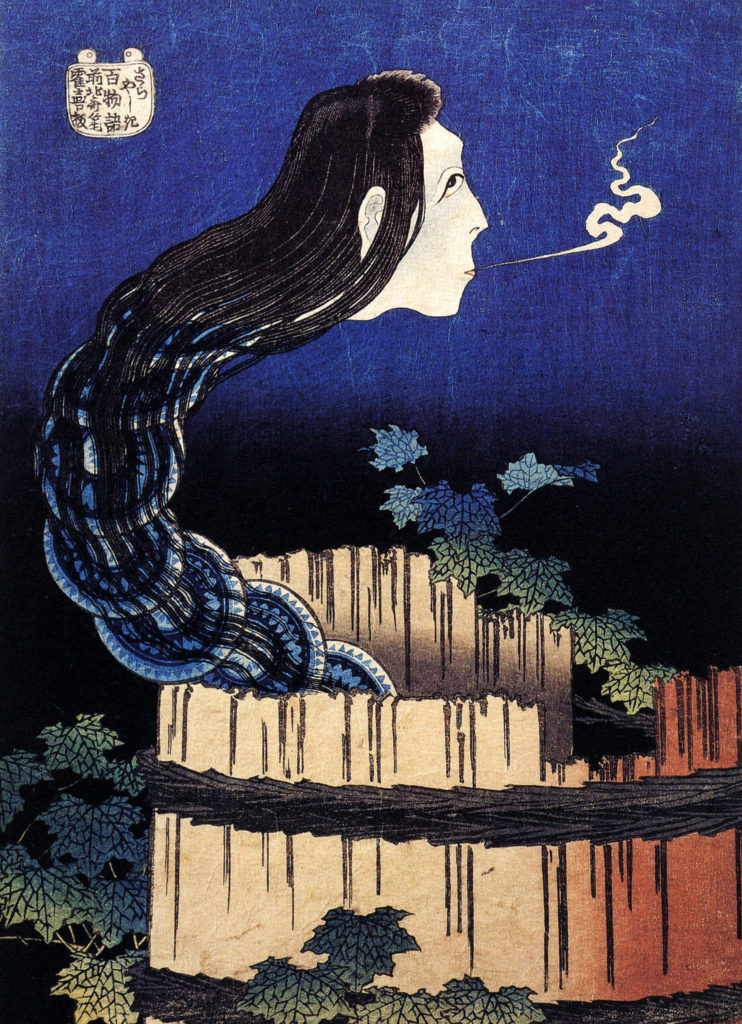
The subsequent outcome to this tale is contended and there’s no definitive ending – some depict an exorcism with screaming the tenth in tune with her, while others portray her merely disappearing once the missing plate is discovered. The plot has other variants, too, changing all drastically as in the Edo and Harima versions, both much more intricate in the level of details whereas they’ve developed into a much deeper narrative. Banchō Sarayashiki is a tragic tale of an inappropriately pursued woman who suffers manipulations to coerce her fate until an unjust death as a consequence of nothing she did – she is very much a rightful vengeful spirit to Japanese lore, a vexed spirit whose rage of injustice channels her into an onryō.
More Folklore and Urban Legends
Senritsu Kaiki File Kowasugi! File 06: The Most Terrifying Movie In History! (2014) Film Review- Kudo against ghosts and science!
No one is prepared for the sixth installment of the Senritsu Kaiki films. Koji Shiraishi, a consistently ambitious director, has made the found footage genre his playground, and we’re fortunate…
Senritsu Kaiki File Kowasugi! File 03: Legend of a Human-Eating Kappa (2013) Film Review- Now it’s a cryptid!
Director Koji Shiraishi takes a dip into cryptozoology in Senritsu Kaiki File Kowasugi! File 03: Legend of a Human-Eating Kappa (shortened to File 03). In this third installment in the…
She Will (2021) Film Review – A Gothic Tale of Power and Feminism
Veteran actress Veronica (Alice Krige) has just undergone a double mastectomy and has decided to go to a secluded retreat with her nurse in order to heal both physically and…
Urban Mysteries: The Search for Saki Sanobashi AKA Go for a Punch
In 2015, someone posted on 4chan asking a simple question: “What’s the most ***** up thing you have seen on the Deep Web?” Skipping all the explanations why this question…
Some say the countdown begun when the first man spoke, others say it started at the Atomic Age. It’s the Doomsday Clock and we are each a variable to it.
Welcome to Carcosa where Godot lies! Surreality and satire are I.
I put the a(tom)ic into the major bomb. Tom’s the name!

